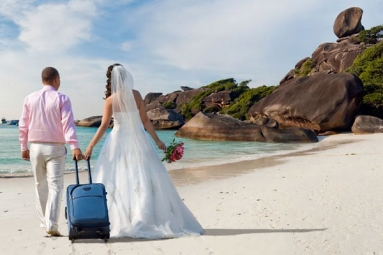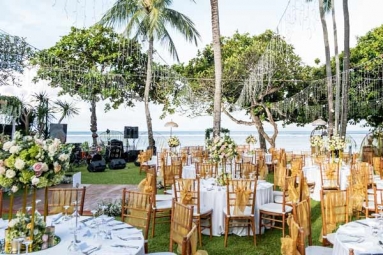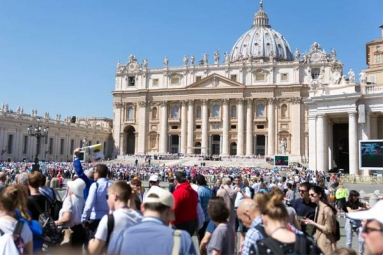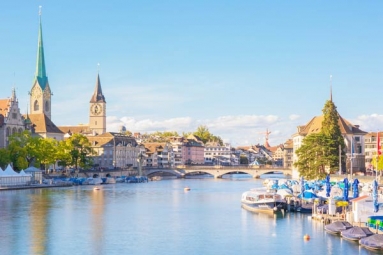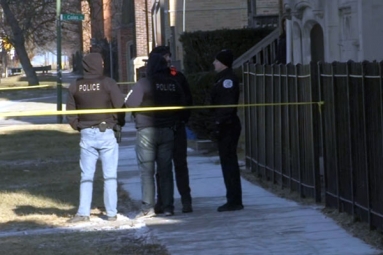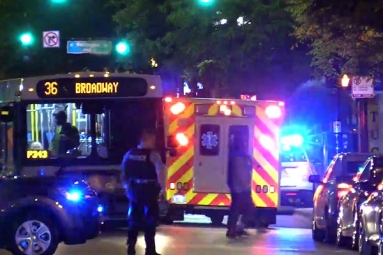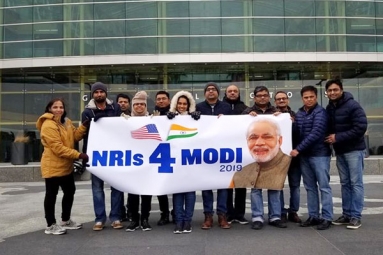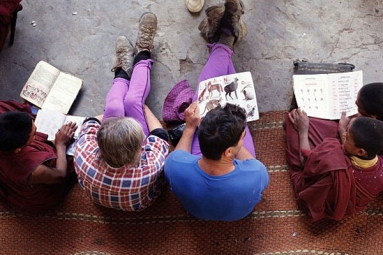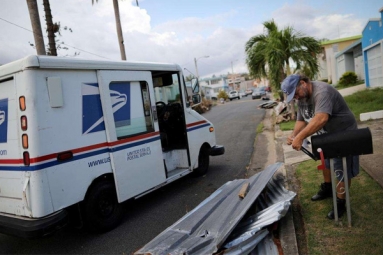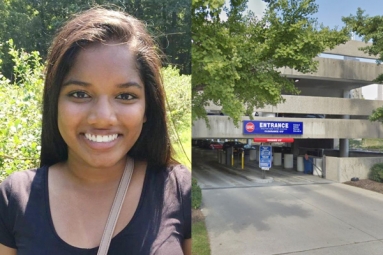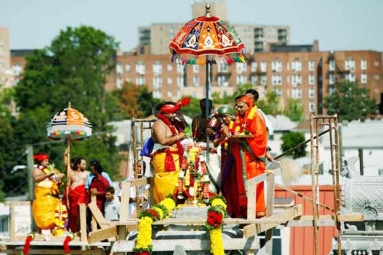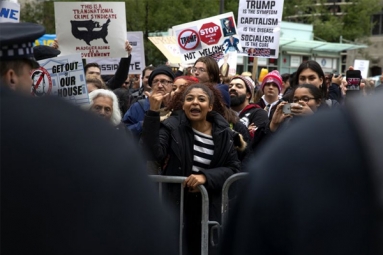Chicago is 'The City that Works' and 'The City of Big Shoulders'
October 01, 2013 11:19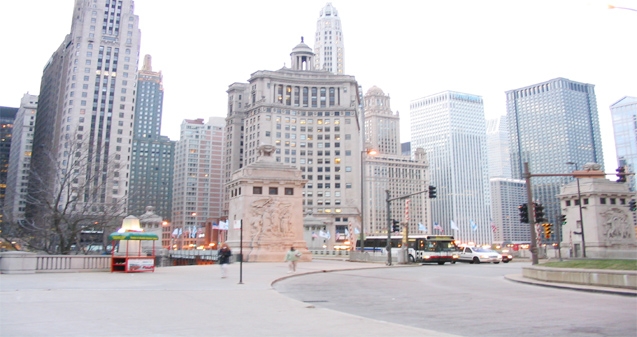
Chicago is "The City that Works" and "The City of Big Shoulders." It boasts the United States' tallest building and one of the world's largest office buildings. With the ubiquitous elevated trains creating a continuous clatter, the city looks, feels, and in fact is, big.
At first glance, Chicago can be overwhelming. But, like any city, it is the sum of its parts, and its parts are diverse. Also known as "The City of Neighborhoods," Chicago comprises more than 75 official neighborhoods. Each features its own distinct quality and character.
So, when trying to digest Chicago, don't try to take it all in with one big bite. Break it up into manageable portions.
The Loop
This area takes its name from the elevated train, the "El," that loops around the city's central core. While the downtown area stretches beyond these boundaries, much of the lifeblood that invigorates the rest of the city also pumps through the Loop. The Willis Tower (formerly the Sears Tower), the United States' tallest building, is here, as is the Chicago Board of Trade , one of the biggest options and futures trading floors in the world. City government offices are based here, as well as the home offices of several major corporations.
When it's time for the city that works to relax, the Loop does not disappoint. The city's magnificent Harold Washington Library , the Art Institute of Chicago , Chicago Architecture Foundation and the Chicago Cultural Center are all here.
Thanks to a burgeoning theater district, the Loop is increasingly becoming a place to visit when the workday ends. The restored Ford Center for the Performing Arts-Oriental Theatre hosts lavish Broadway productions while the Chicago Theatre has several musical concerts. The landmark Auditorium Theatre , considered by some the most beautiful theater in America, hosts musicals, concerts and other performances in the South Loop area. The renowned Goodman Theatre also offers several performances throughout the year. The North Loop offers many dining and retail options.
While technically just outside the Loop's borders, Grant Park should not be missed. Hugging Lake Michigan, this park is often referred to as "Chicago's Front Yard." The majestic Buckingham Fountain is here, as is a plush rose garden and the Chicago Symphony Orchestra 's outdoor home, the Petrillo Music Shell . The park is immense, with the capacity to hold up to three million people, as is tested annually by the Taste of Chicago festival. Grant Park also plays host to many free music and arts festivals during the summer, including Jazz Fest, Blues Fest and Gospel Fest.
Near North Side
Just to the north of the Loop, bordered by the Chicago River on the south, the Lake on the east and North Avenue on the north, is Chicago's Near North Side neighborhood. This area is in turn made up of several other smaller districts.
The city's "Magnificent Mile" (known as the "Mag Mile" to locals) is one of the Near North's most famous offerings. Stretching along Michigan Avenue from the Chicago River to Oak Street, this shoppers' paradise is home to high-scale chains like Neiman Marcus and Bloomingdale's at the 900 North Michigan Avenue Shops , as well as the lavish boutiques scattered throughout the area along with many fine hotels and restaurants.
The city's early monument to modernity, the John Hancock Center , is just down the block from the city's links to its past, the Water Tower and the Chicago Water Works , two of the few buildings that survived the Great Chicago Fire of 1871. Water Tower Place , an upscale indoor shopping mall, anchored by American Girl and Macy's and offers a wide variety of shopping, dining and entertainment options. You can enjoy RL Restaurant or Ralph Lauren's, the designer's largest retail store and its hip adjoining restaurant. Nordstrom , Crate & Barrel and Saks Fifth Avenue can be found a few blocks south on Michigan Avenue.
If you are wondering where the people who can afford to shop at the more expensive stores on Michigan Avenue live, head east to Streeterville, or the adjoining Gold Coast neighborhood. Theoretically, the Gold Coast is named for the African coast of the same name, but the moniker also describes the area's opulence. The neighborhood is the nation's second wealthiest, surpassed only by New York City's Central Park East.
Just north of the Chicago River and a few blocks west of the Mag Mile is River North, home to an eclectic mix of swanky galleries, trendy cafes and theme restaurants like the Hard Rock Cafe . While many of the city's residents pretend they have never been to these restaurants, they most likely have - so go and enjoy with a clear conscience.
South Loop
In stark contrast to the garish designs of the chain restaurants, the South Loop offers a quaint, Old World charm, neighborhood bars and smaller restaurants. Once home to one of the largest publishing centers in the Midwest, the warehouses left behind have been renovated and taken over by young, affluent professionals who wish to walk to their jobs in the Loop. The area's focal point, Dearborn Station , sets the tone for the neighborhood. The former rail transportation hub's façade has been lavishly restored.
Beyond Downtown
Lake Shore Drive, one of the city's major north-south arteries, runs along the picturesque lakefront. While the Drive will take you to many of the city's attractions, do not forget that this boulevard is an attraction in itself. The lake view, the bold skyline and even the Drive's own tree-lined medians offer some of the most breathtaking views in the city.
Lincoln Park
Once you pass North Avenue, you will enter Lincoln Park, one of the city's more gentrified areas. Tree-lined Fullerton Avenue, with its brownstones converted into condos, gives you a feel for the neighborhood residents. Lincoln Park also surrounds the DePaul University neighborhood. A variety of bars, dance spots and inexpensive restaurants cater to the college and just-out-of-college crowd.
Not all of Lincoln Park hustles and bustles. In fact, the park from which the neighborhood takes its name is one of the city's largest and most pastoral. Designed by Frederick Law Olmstead, who also drew up the blueprints for New York's Central Park, Lincoln Park encompasses more than 1,000 acres. It includes a Zoo, the Lincoln Park Conservatory , The Peggy Notebaert Nature Museum , a driving range, dozens of ball fields and several biking and running paths connecting it to lakefront beaches. You'll find many pickup games of soccer and ultimate Frisbee here on warm summer days.
Lakeview
Heading further north brings you to Lakeview, a neighborhood that serves as a popular nightlife center for both the straight and gay communities. These groups tend to party separately, with the standout exception being Berlin , a late-night dance club where hipsters of every orientation party together.
Halsted Street between Belmont Avenue and Irving Park Road serves as the headquarters for gay nightlife. The area is not hard to find; just look for the gigantic rainbow-colored pylons that line the streets. For dancing, head to Roscoe's Tavern or Spin . Don't miss the Center on Halsted, the city's premier gay destination for cultural and recreational activities and wide array of social events throughout the year.
If partying is not your thing, don't despair. The area also offers its share of restaurants, from Angelina Ristorante and Yoshi's Cafe to the 24-hour Melrose Restaurant .
For the straight set, head a few blocks west to Wrigleyville, a bar area that gets its name from the nearby Wrigley Field , home of the Chicago Cubs. The numerous taverns here make for excellent bar-hopping, so stop in the Cubby Bear or The Metro , a bar that features live music and up-and-coming rock bands like the Smashing Pumpkins, who played here before they made it big and returned for their final two shows.
Diners can satisfy a variety of tastes in Wrigleyville, including Asian, Cajun, Italian and Mexican. Those who prefer to stick with the bar scene can eat well at Bar Louie , John Barleycorn Memorial Pub or Sluggers .
Uptown
For more live music, head farther north, where you'll find the Aragon Ballroom , the Riviera and the prohibition-era jazz bar, Green Mill . Some of the best music in the city (be it jazz, rock, or something in between) can be found here.
Wicker Park/Bucktown
A hot spot for artisans and heavy drinkers alike is the Wicker Park/Bucktown area. Hang out at bars like the Blue Note and Holiday Club or restaurants like Northside Bar & Grill and Beat Kitchen and it won't be long before some hipster starts talking to you about gentrification.
The South Side
If you are visiting the city, do not make the mistake many North Siders do by forgetting that Lake Shore Drive also runs south of downtown.
As you cruise south on Lake Shore Drive, admire the Museum Campus where the Shedd Aquarium , Adler Planetarium and the Field Museum converge. If you have the time, you could easily spend a day in each museum, but it's also well worth a stop just to enjoy the lake views and watch sailboats go by.
Just south, you will pass Soldier Field , home of the Chicago Bears. Immediately after gaping at Soldier Field you will need to guard against whiplash as you turn to stare at the sprawling McCormick Place , one of the largest convention centers in North America and home to numerous annual trade shows, like the Chicago Boat, RV & Outdoors Show and the Chicago Auto Show. The space includes more than 2.2 million square feet of exhibition space, Chicago's largest ballroom and the Arie Crown Theater .
US Celluar Field , formally known as Comiskey Park, home of the Chicago White Sox , lies just west of Lake Shore Drive. The modern stadium features an exploding scoreboard that sets off fireworks along with a Sony Jumbo Screen.
Further south, the charming Hyde Park neighborhood has a quaint, old-world look to it. Home to the world-famous University of Chicago , the area boasts interesting restaurants like the Dixie Kitchen and Medici , great used book stores like O'Gara & Wilson's (the oldest used bookstore in the country), and the quaint 57th Street Art Fair . Hyde Park is also home to the gigantic 350,000 square-foot Museum of Science and Industry . This monument to 20th-century technology houses a replica coal mine, a German U-Boat and a Zephyr train and the Smart House: Green & Wired, a futuristic home made with eco-friendly materials.
After visiting the museum, push away thoughts of industriousness long enough to take a leisurely stroll through Jackson Park . Like its sister to the north, Lincoln Park , Jackson Park was designed by Frederick Law Olmstead. It features a Japanese garden, a bird sanctuary, a reflecting pond and a golf course.
Chicago is a destination that has so much to offer visitors. Come and explore the diversity and variety that is Chicago.
Source : Yahoo! Travel



